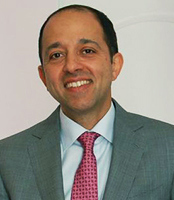In the U.S., the Centers for Disease Control and Prevention (CDC) perform myriad health related services including identifying and tracking birth defects. Because orofacial clefts occur relatively frequently, The CDC’s National Center on Birth Defects and Developmental Disabilities (NCBDDD) conducts research to learn more about cleft lip with or without cleft palate and how to prevent their occurrence.
The CDC seeks to discover correlations between particular circumstances and an increase in the risk of a mother giving birth to a child with a cleft lip or palate. The studies may examine mothers’ use of drugs including nicotine and alcohol, for example. They also explore the many ways orofacial clefts impact the children who are personally affected and their families. Health care expenses and obstacles to obtaining care are considered, as are quality of life issues. The cost in dollars and time, and the inconvenience of long, complex treatment plans are often a burden to families. Through ongoing research, the CDC and its partners mission is to improve the lives of children and families affected by craniofacial conditions present at birth.
More specifically, the CDC supports states in the tracking and causes of birth defects, including cleft and craniofacial conditions, and works to find out what causes them. Partners like the National Foundation for Facial Reconstruction (NFFR) and Operation Smile provide parents, health care providers and school personnel with educational resources on how to care for children with cleft and craniofacial defects. http://www.nffr.org/Parent_Guides_U3FC.html.
To assess how cleft and craniofacial defects impact children and their families, Health Service Research performs studies on health care service use, timeliness of services, costs, access to care, quality of life and health outcomes. One state’s study recently concluded that many families are burdened by obstacles to needed care like high costs, lack of transportation and difficulty obtaining the proper referrals. Another three-state study showed children with clefts are sometimes more likely to exhibit symptoms of separation anxiety disorder than children without these conditions.
While keeping up with research may help some families understand and come to terms with how they are affected by clefts, others may find clinical information boring to read or hard to understand. Fortunately, there are literary and ‘pop culture’ websites that also discuss clefts. It may help those affected by the condition and their families to know they are not alone in the long process of healing. Cleft stories in mainstream media may not be common, but they are out there.
The Gurkha’s Daughter by Prajwal Parajuly’s is a new collection of eight stories, including one called “The Cleft”. In it, a 13-year-old servant girl disfigured by a cleft palate plots to create a better life for herself. The publisher has shared the story online ahead of the book’s release this month (July, 2014.) http://theaerogram.com/cleft-prajwal-parajulys-gurkhas-daughter/excerpt from upcoming book release.
What do King Tut, Peyton Manning, Jesse Jackson and Joaquin Phoenix have in common? All were born with cleft lip and/or cleft palate. They are four of the well-known people on a list of well-know people with the condition. Find the rest of the list on the Cleft Palate Foundation’s Facebook page. https://www.facebook.com/cpf.cleftline/posts/135901519817876.
In addition, the National Cleft & Craniofacial Awareness & Prevention Month (NCCAPM) Facebook page is full of information about local, regional and national events and access to the various programs offered by participating organizations.
https://www.facebook.com/NCCAPM
 Kayvon Haghighi, DDS, MD, FACS is licensed to practice both medicine and dentistry in the state of New Jersey. Dr. Haghighi’s unique combination of surgical training and experience in facial reconstruction enables him to analyze your condition from multiple points of view.
Kayvon Haghighi, DDS, MD, FACS is licensed to practice both medicine and dentistry in the state of New Jersey. Dr. Haghighi’s unique combination of surgical training and experience in facial reconstruction enables him to analyze your condition from multiple points of view.
